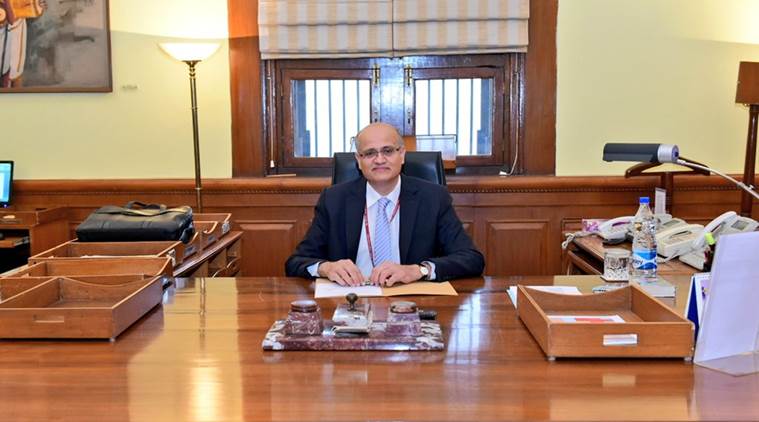by C. Raja Mohan
 Indian foreign policy debate would be less metaphysical and more pragmatic if it stops obsessing about ‘non-alignment’
Indian foreign policy debate would be less metaphysical and more pragmatic if it stops obsessing about ‘non-alignment’
Is “non-alignment” a special attribute of Indian foreign policy? Given Delhi’s continuing preoccupation with the idea of non-alignment, most visible recently at last week’s Raisina Dialogue in Delhi, you would think it is.
More than a hundred countries are members of the so-called Non-Aligned Movement (NAM). They swear, at least formally, by the idea of non-alignment and show up at the triennial NAM summits. But few of them of think of non-alignment as the defining idea of their foreign policies. Even fewer believe it is worth debating on a perennial basis.
The governments in Delhi might have been the last, but they have certainly moved away from the straitjacket of non-alignment — in practice if not in theory. The rhetoric too has changed under the present government. As Foreign Secretary Vijay Gokhale put it in response to a question at the Raisina Dialogue, India is now “aligned”. “But the alignment is issue-based”, Gokhale said. “It is not ideological. That gives us the capacity to be flexible, gives us the capacity to maintain our decisional autonomy.”
If non-alignment belongs to the past, is “strategic autonomy” something unique to India? Not really. All countries, big and small, try to maximise their freedom of action. And the autonomy that a nation can exercise depends on its specific circumstances such as size, location, comprehensive national power, and the nature of the threats among many other things.
Take, for example, Pakistan. In Delhi’s foreign policy mythology — India chose an “independent” foreign policy and Pakistan a “dependent” one. As the Cold War between America and Soviet Russia enveloped the world soon after Partition and Independence in the middle of the 20th century, India and Pakistan seemed to take opposite diplomatic paths. India embraced non-alignment and refused to endorse America’s anti-Communist alliances. Pakistan pooh-poohed non-aligned solidarity, calling it “zero plus zero is equal to zero”. It signed a bilateral defence pact with the US and joined the two regional security blocs — called Central Treaty Organisation (CENTO) in the Middle East — and the South East Asia Treaty Organisation (SEATO) in the Far East.
What followed was far more interesting. The seeming ideological clarity that both India and Pakistan brought to their respective foreign policies dissolved quickly in the real world.
India, which had refused to join the West in isolating communist China and sought to befriend it, ended up in a conflict with Beijing. And when the border war broke out in 1962, India turned to the United States for military assistance. Pakistan, which was quick to join the anti-Communist bandwagon did not take long to discover the convergence of interests with Maoist China. Pakistan’s delegation went into the Afro-Asian summit at Bandung, Indonesia, in 1955 with an anti-China orientation. It returned with an understanding of Pakistan’s shared interests with Beijing on balancing India. The Chinese premier Zhou Enlai convinced Pakistan leader Mohammed Ali Bogra that Communist China is not a threat to Pakistan. Bogra, in turn, made it clear that Pakistan’s problem is not with communist expansion in Asia but with India. The rest — the making of a very special bilateral relationship — is history. China has rarely complained since about Pakistan’s long-standing military relationship with the US.
That Pakistan could warm up to China so soon after it joined America’s anti-Communist alliances in Asia is probably one of the most impressive examples of exercising “strategic autonomy”. It was so successful that Pakistan became a bridge between China and the US at the turn of the 1970s.
Indian foreign policy community continues to be troubled by the question of alliances and autonomy when it comes to dealing with China and the US. It could, perhaps, find a thing or two from Pakistan that has managed these relationships quite well.
Delhi’s traditional fear of alliances is based on a profound misreading of what they might mean. Alliances are not a “permanent wedlock” or some kind of a “bondage”. They are a political/military arrangement to cope with a common threat. When the shared understanding of the threat breaks down, so does the alliance.
A couple of examples. To cope with the American threat Mao Zedong aligned with Soviet Russia in 1950. Two decades later, he moved closer to America to counter Russia. Now China is once again buddies with Russia in trying to limit American influence in Eurasia. When Communist China walked into Tibet in 1949, the monarchy in neighbouring Nepal got India to sign a treaty in 1950 offering protection. Not too long after, Kathmandu figured China is not a threat and began to undo the security provisions of the 1950 treaty.
Not many countries in the world today are members of alliances. The few alliances that have survived since the Second World War are undergoing stress on the supply as well as demand side. In America, President Donald Trump is questioning the costs and benefits of these alliances. Presidents Tayyip Erdogan of Turkey and Moon Jae-in of South Korea, both treaty allies of the US, hardly share American perceptions on the regional threat in the Middle East and the Korean Peninsula respectively.
India, as Gokhale told the Raisina Dialogue, is a large and globalised economy with “big stakes in all parts of the world”. The Indian foreign policy debate would be less metaphysical if it stops obsessing about “non-alignment” and “strategic autonomy” and starts focusing on a pragmatic assessment of India’s interests and the best means to secure them — including partnerships and coalitions — against current and potential threats.
No comments:
Post a Comment